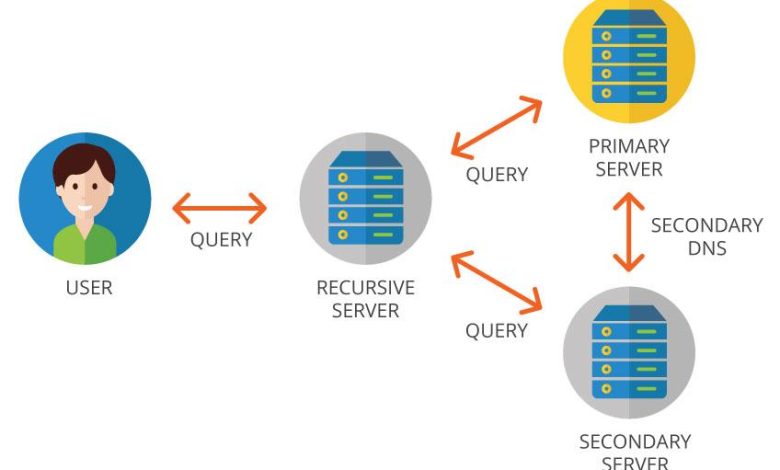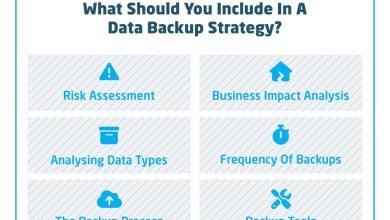Exploring DNS: How Domain Name Systems Work

Okay, I will provide you with a comprehensive outline adn a detailed article on “Exploring DNS: How Domain Name Systems Work,” adhering to all your specifications.
Outline: Exploring DNS: How Domain Name Systems Work
I. Introduction
- The Internet’s Unsung hero: DNS Unveiled
- Beyond IP Addresses: The Need for Human-readable Names
- What Exactly is DNS? A Simple Definition
- DNS: The Backbone of Seamless Web Browsing
- A Glimpse into the World of Domains and IP Addresses
II. The Building Blocks of DNS
- Domain Names: Your Website’s Online Identity
Top-Level Domains (TLDs): .com, .org, and Beyond
Second-Level Domains: Your Brand’s Unique Name
Subdomains: Organizing Your Website’s Content
- IP Addresses: The Numerical Language of the Internet
IPv4 vs.IPv6: The evolution of IP addressing
- DNS Records: The Heart of the Resolution process
A Records: Mapping Names to IPv4 Addresses
AAAA Records: Linking Names to IPv6 Addresses
CNAME Records: Creating Aliases for Domain Names
MX Records: Directing Email Traffic
NS Records: Pointing to Authoritative Name Servers
TXT Records: Providing Textual Data
- Name Servers: The Librarians of the DNS World
Root Name Servers: The Top of the Hierarchy
TLD Name Servers: Managing Top-Level Domains
Authoritative Name Servers: Holding the Master Records
Recursive Resolvers: The User’s DNS workhorse
III. The DNS Resolution Process: A Step-by-Step Journey
- From Browser to Website: The DNS Query in Action
- The Role of the Recursive Resolver: Your First Point of Contact
- Consulting the root Name Servers: Starting the Search
- Navigating TLD Name Servers: Narrowing Down the Options
- Reaching the Authoritative Name Server: The Final Destination
- Caching: Speeding Up Future Requests
IV. Beyond the Basics: Advanced DNS Concepts
- DNS Security Extensions (DNSSEC): Protecting Against Spoofing
- Anycast DNS: Enhancing Reliability and Performance
- DNS Load Balancing: Distributing traffic Intelligently
- Dynamic DNS: Keeping Up with Changing IP Addresses
- DNS over HTTPS (DoH) and DNS over TLS (dot): Encrypting DNS Queries
V.The Future of DNS: Innovations and Trends
- DNS in the Age of IoT: Managing Billions of Devices
- Blockchain and DNS: A Decentralized Future?
- quantum computing and DNS Security: Preparing for New Challenges
- DNS as a Service (DNSaaS): cloud-based DNS Management
- The Ever-evolving Role of DNS in a Connected World
article: Exploring DNS: How Domain Name Systems work
The internet’s Unsung Hero: DNS Unveiled
Imagine a world without street addresses. Finding a specific house would be a nightmare, right? Well, the internet, in its vastness, faces a similar challenge. Billions of devices are connected, each identified by a unique numerical IP address. Remembering these long, complex strings of numbers for every website you want to visit? Forget about it! This is where the Domain Name System (DNS) steps in, acting as the internet’s very own phone book, translating human-friendly domain names into machine-readable IP addresses. It is a crucial protocol of the modern internet, working in the background to ensure that our online activities occur smoothly and effectively.
Beyond IP Addresses: The Need for Human-Readable Names
IP addresses, while essential for computers to communicate, are hardly user-friendly. Try memorizing a dozen or so for your favorite websites, like 186.192.1.1. Doesn’t quite roll off the tongue, does it? Domain names, conversely, like “google.com” or “wikipedia.org,” are memorable and intuitive. This seemingly simple concept is the cornerstone of how we navigate the web today. DNS makes it possible to access online resources using names that we can easily understand and remember, rather than needing to know the elaborate numerical addresses that computers use behind the scenes.
What Exactly is DNS? A Simple Definition
In a nutshell, DNS is a distributed, hierarchical system that translates domain names into IP addresses. It’s like a massive, global directory, constantly updated, that allows your computer to find the exact location of any website or online service. When you enter a domain name in your browser, your computer initiates a DNS query, a “look-up” process, to find the corresponding IP address, which occurs with impressive speed. Most users hardly notice how quickly it works, except when it stops working.
DNS: The Backbone of Seamless Web Browsing
Think of DNS as the silent orchestrator of your online experience. Every time you click a link,send an email,or stream a video,DNS is working behind the scenes,seamlessly connecting you to the right server. Without DNS, the internet as we know it would simply cease to function in a practical manner. We would be forced to enter lengthy numerical IP addresses, making it more complicated to access data and communicate online.
A Glimpse into the World of Domains and IP Addresses
To grasp the magic of DNS, we need to understand its fundamental components: domain names and IP addresses. One acts like a bridge between human language and technological infrastructure, while the latter is a sequence of numbers that identifies a single device on a network. These two core features enable computers to communicate and provide peopel easy access to websites and other data stored online.
Domain Names: Your Website’s Online Identity
A domain name is more than just an address; it’s a brand, an identity on the vast digital landscape. It’s the first impression users have of your online presence. As such, the name should be memorable and, in some cases, include information related to the site’s purpose. This is not onyl a matter of convenience. It is indeed also a matter of branding.
Top-Level Domains (TLDs):.com, .org, and Beyond
At the end of every domain name lies the Top-Level Domain (TLD). These are the familiar suffixes like “.com,” “.org,” “.net,” and newer ones like ”.tech” or ”.blog.” TLDs categorize websites by their purpose or geographical location. This makes it possible to distinguish what kind of website someone is accessing and better understand its purpose.
Second-Level domains: your Brand’s Unique Name
This is where your creativity or brand shines. The second-level domain is the part that comes before the TLD, like “google” in “google.com.” This is the core of what makes a domain name unique and sets it apart from others. It is usually the most relevant part of a domain name since it represents a company or organization’s name or brand.
Subdomains: Organizing Your Website’s Content
Subdomains are like branches of a main domain, used to organize different sections or services within a website.for example, ”mail.google.com” is a subdomain of “google.com,” specifically for Google’s email service.Think of it as creating different departments within a company,each with its own specific address.
IP addresses: The Numerical Language of the Internet
While we humans love our names, computers prefer numbers. An IP address is a unique numerical identifier assigned to every device connected to a network, allowing them to locate and communicate with each other. It is analogous to having a home address,but on the internet.
IPv4 vs. IPv6: The Evolution of IP Addressing
There are two primary versions of IP addresses: IPv4 and IPv6. IPv4, the older version, uses a 32-bit format, which limits the number of possible addresses to around 4.3 billion.With the exponential growth of the internet, this pool of addresses started running dry, like water in the desert. IPv6, developed to solve this issue, uses a 128-bit format, providing a virtually inexhaustible supply of IP addresses.As new devices connect to the internet,old IP addressing methods will not be able to support the new connections.
DNS records: The Heart of the Resolution Process
DNS records are the entries in the DNS database that store the crucial information needed to translate domain names into IP addresses. Each record type serves a specific purpose. This is how DNS systems are able to provide the correct instructions when connecting a domain name to an IP address.
A Records: Mapping Names to IPv4 Addresses
The most fundamental record, the A record, links a domain name to an IPv4 address. When you type a website address, the A record is what tells your computer where to find the website’s server, the actual location of the website’s files and content.
AAAA Records: Linking Names to IPv6 Addresses
Similar to A records, AAAA records perform the same function but for IPv6 addresses. As the internet transitions to IPv6, these records will become increasingly crucial.
CNAME Records: Creating Aliases for Domain Names
A CNAME record,or Canonical Name record,creates an alias,like a nickname,for a domain name.




